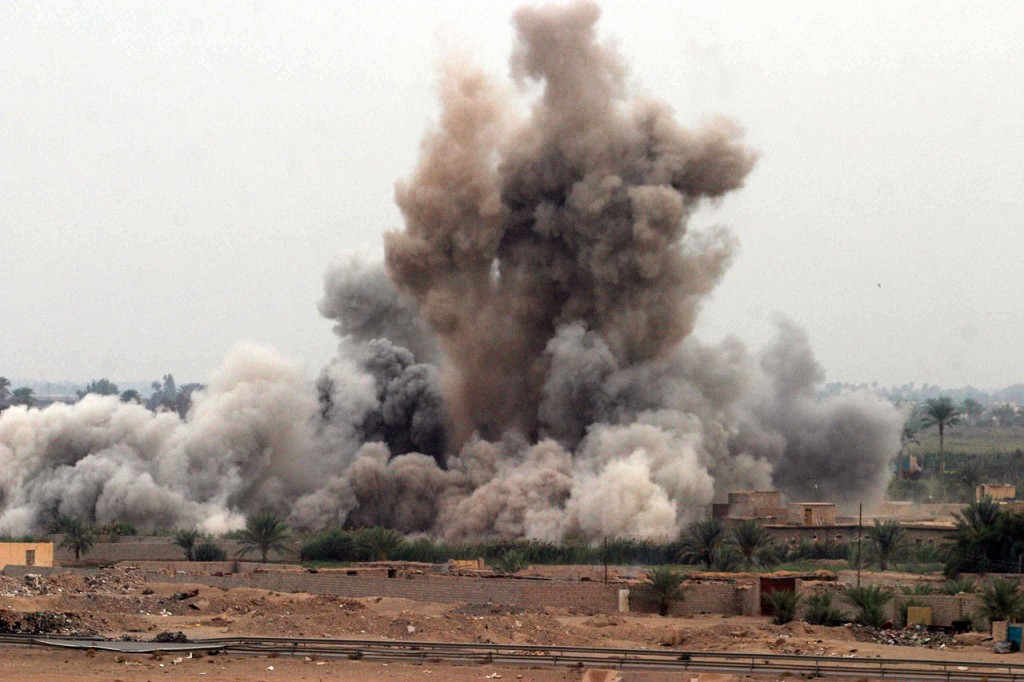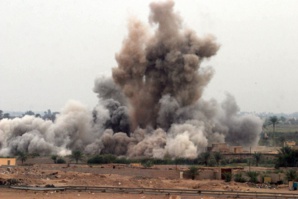The United States has finally decided that it can no longer afford the situation at the Syrian front to escalate and go out of control. The United States has provided military training to the Syrian rebels and to take a notch further, and has now made public available that they will provide air support to the Syrian rebels no matter who they are fighting, be it, forces who are loyal to the Syrian President Bashar al-Assad or ISIS terrorists.
This decision by U.S President Barack Obama, is of strategic importance since it has the potential to draw in the United States from a supportive role to one which may include more hands on combat. This decision is essentially aimed at shielding groups of fledging Syrian fighters who have been armed and trained by the U.S to fight ISIS, and not forces loyal to Assad. However, by doing so, the U.S has tread on a very thin line, once these fighters are armed and trained, the U.S may not have complete control with who they choose to fight.
The Syrian civil war, as civil war goes, is messy. The Islamic State is just one of the many threats. As the first batch of U.S trained forces who have been deployed in Northern Syria came under fire from militants, the U.S was quick to provide air support, thus triggering the first airstrikes in their support.
U.S officials, who are in the know of the matter, spoke to reporters on Wall Street Journal, on condition of anonymity, saying that the United States will provide the Syrian rebels with offensive airstrikes so that they could advance into ISIS held territories. The U.S will also provide defensive support to repel any counter attacks.
U.S officials have long downplayed the idea of that forces loyal to Assad could attack the U.S led coalition’s airstrikes on their bombing run as they fly deep into Syria to bomb ISIS targets. As of date, Assad’s forces have not targeted them. However, U.S officials prefer to stick on the side of caution and do not want to rule out the possibility of an unintentional clash. To this effect, the White House and the Pentagon, have declined to further discuss the rules of engagement.
Alistair Baskey, the White House National Security Council spokesman only said that forces which have been trained by the U.S would be provided a range of support systems, including "defensive fires support to protect them". Last Friday’s airstrikes were a proof of that support.
"We won't get into the specifics of our rules of engagement, but have said all along that we would take the steps necessary to ensure that these forces could successfully carry out their mission," said Baskey.
Elissa Smith, Pentagon’s spokeswoman also declined to comment on the rules of engagement. She only said that the U.S. military will focus "first and foremost" on combating Islamic State militants.
"We recognize, though, that many of these groups now fight on multiple fronts, including against the Assad regime, (Islamic State) and other terrorists," said Smith.
Last May, the U.S military started training its first batch of 5400 fighters, in what was perceived as President Obama’s test on getting local partners to combat extremists and keep off U.S troops from the front line. The training program has been challenging from the start. Many have dropped out and some were declared ineligible.
A key requirement of the training program has been that those who sign up should focus on battling ISIS instead of forces from the Syrian government. This has however taken a toll on the recruitment process and has side-lined the Syrian opposition. The U.S government has long sought to avoid a direct conflict with Assad’s forces.
The problem is, once these Syrian rebels return from the battlefield they re-align and turn on rival militant groups. Last week’s attack in a Syrian compound has been attributed to Al Qaeda's Syria wing which was since long being used by members of a Western-aligned insurgent group, known as Division 30.
Many recruits trained by the U.S have come from Division 30. The Nusra Front, another militant group, claimed last week to have abducted the leader of Division 30. Speaking on the condition of anonymity, U.S officials say, that they have not trained the leader of Division 30.
The Nusra Front is an insurgent group based out of Northern Syria whose powers are growing. They have a record of crushing rebel groups who have received support from the West. The Hazzm movement is a prominent example, which collapsed because of the Nusra Front.
Source(s): Reuters.com
This decision by U.S President Barack Obama, is of strategic importance since it has the potential to draw in the United States from a supportive role to one which may include more hands on combat. This decision is essentially aimed at shielding groups of fledging Syrian fighters who have been armed and trained by the U.S to fight ISIS, and not forces loyal to Assad. However, by doing so, the U.S has tread on a very thin line, once these fighters are armed and trained, the U.S may not have complete control with who they choose to fight.
The Syrian civil war, as civil war goes, is messy. The Islamic State is just one of the many threats. As the first batch of U.S trained forces who have been deployed in Northern Syria came under fire from militants, the U.S was quick to provide air support, thus triggering the first airstrikes in their support.
U.S officials, who are in the know of the matter, spoke to reporters on Wall Street Journal, on condition of anonymity, saying that the United States will provide the Syrian rebels with offensive airstrikes so that they could advance into ISIS held territories. The U.S will also provide defensive support to repel any counter attacks.
U.S officials have long downplayed the idea of that forces loyal to Assad could attack the U.S led coalition’s airstrikes on their bombing run as they fly deep into Syria to bomb ISIS targets. As of date, Assad’s forces have not targeted them. However, U.S officials prefer to stick on the side of caution and do not want to rule out the possibility of an unintentional clash. To this effect, the White House and the Pentagon, have declined to further discuss the rules of engagement.
Alistair Baskey, the White House National Security Council spokesman only said that forces which have been trained by the U.S would be provided a range of support systems, including "defensive fires support to protect them". Last Friday’s airstrikes were a proof of that support.
"We won't get into the specifics of our rules of engagement, but have said all along that we would take the steps necessary to ensure that these forces could successfully carry out their mission," said Baskey.
Elissa Smith, Pentagon’s spokeswoman also declined to comment on the rules of engagement. She only said that the U.S. military will focus "first and foremost" on combating Islamic State militants.
"We recognize, though, that many of these groups now fight on multiple fronts, including against the Assad regime, (Islamic State) and other terrorists," said Smith.
Last May, the U.S military started training its first batch of 5400 fighters, in what was perceived as President Obama’s test on getting local partners to combat extremists and keep off U.S troops from the front line. The training program has been challenging from the start. Many have dropped out and some were declared ineligible.
A key requirement of the training program has been that those who sign up should focus on battling ISIS instead of forces from the Syrian government. This has however taken a toll on the recruitment process and has side-lined the Syrian opposition. The U.S government has long sought to avoid a direct conflict with Assad’s forces.
The problem is, once these Syrian rebels return from the battlefield they re-align and turn on rival militant groups. Last week’s attack in a Syrian compound has been attributed to Al Qaeda's Syria wing which was since long being used by members of a Western-aligned insurgent group, known as Division 30.
Many recruits trained by the U.S have come from Division 30. The Nusra Front, another militant group, claimed last week to have abducted the leader of Division 30. Speaking on the condition of anonymity, U.S officials say, that they have not trained the leader of Division 30.
The Nusra Front is an insurgent group based out of Northern Syria whose powers are growing. They have a record of crushing rebel groups who have received support from the West. The Hazzm movement is a prominent example, which collapsed because of the Nusra Front.
Source(s): Reuters.com






